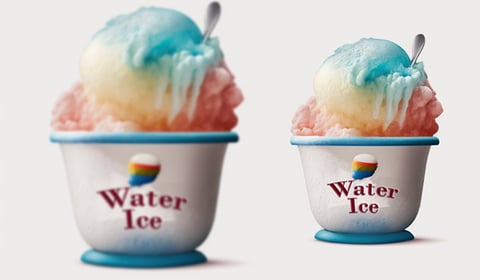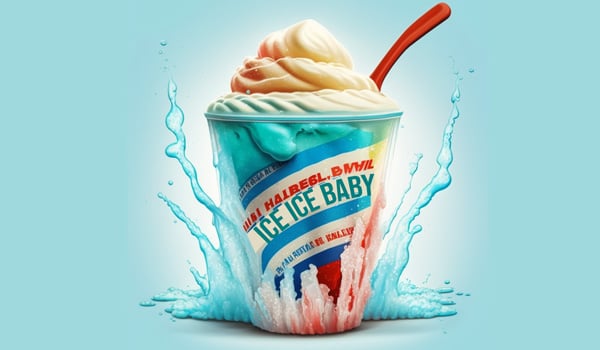INTRODUCTION
When the sun is scorching and you’re in desperate need of a cool and refreshing treat, water ice is there to save the day. Whether you know it as Italian ice, water ice, or “Wooder Ice” this frozen delight is a quintessential indulgence. This delightful frozen dessert has been soothing palates for generations, offering a vibrant burst of flavor and a chill that’s second to none. In this comprehensive guide, we’ll explore the world of water ice, from its history and regional variations to flavor choices and creative ways to enjoy it. So, let’s dive into Water Ice 101!
A BRIEF HISTORY OF WATER ICE
Italian ice, often referred to as “water ice” in some regions, has a rich history dating back to ancient times. The tradition of combining ice with fruit juices and sweeteners can be traced to ancient Rome, where the elite enjoyed a precursor to Italian ice. However, the modern Italian ice we know today evolved in Sicily during Arab rule. It featured a delightful blend of ice, fruit juices, and sugar, often flavored with lemons or local fruits. This tradition eventually made its way to America with Italian immigrants, becoming a beloved summertime staple.
For years ices were handmade in tubs with rock salt and hand cranks. Fresh fruits and sugar were the only ingredients. There were no added stabilizers or emulsifiers. Lemon was the king, offering a sweet and sour staple for the industry. Owners would squeeze lemons daily to provide the freshest product possible.
As the concept of Italian Ice evolved, so did the public’s palette for more. Cherry became the next big flavor. While Lemon offered a clean look and lip puckering savory-ness, cherry was a super sweet and messy alternative.
Philadelphia and New York soon became the birthplace of the Italian Ice expansion in the mid to late 1980s. Brands such as Joe’s, Pop’s, Petrucci’s and Rita’s started to open multiple locations in the Philly market. The ice in this region was a little warmer and softer than the original Italian ice or older granita style and became known as “Wooder Ice.” In New York, Ices remained a bit harder, grainier, and colder. It was a product similar to Italian Ice, but the market was just as hot.
Flavor options expanded as well. The popularity of the product demanded scalability. Shops began investing in batch equipment to produce the necessary product. Supply companies started bottling ingredients. Fresh fruits became more of an additive rather than the only flavoring ingredient.
Today there are thousands of stores selling ices as their foundation. Italian ices, granita, sorbets, and even prepacked water ice are sold in supermarkets and convenience stores. This refreshing treat has become a juggernaut of profit with sales approaching 1 billion dollars.
WATER ICE PROS
Water ice is best served at a temperature that is just below freezing, typically 6-8 degrees all the way up to 18-22 degrees degrees for a softer Philly style ice. This temperature ensures that the water ice is frozen enough to maintain its texture and consistency while also making it easy to scoop or serve. If it’s too cold, the water ice can become too hard and difficult to enjoy – freezing your taste buds and minimizing the initial flavor explosion. On the other hand, if it’s too warm, it will quickly melt and lose its refreshing, icy quality. So, serving water ice at the right temperature strikes the right balance for the best texture and taste.
Water ice is immensely popular for several compelling reasons:
1. Refreshing on Hot Days: Water ice provides a delightful and instant cooling effect on a scorching summer day. Its icy, refreshing nature makes it a go-to treat when temperatures soar.
2. Wide Array of Flavors: Water ice comes in an extensive range of flavors, from classic choices like lemon and cherry to exotic and creative options. This diversity allows people to find their favorite flavors and try new ones.
3. Dairy-Free and Fat-Free: Water ice is dairy-free and fat-free, making it a lighter and healthier alternative to ice cream or gelato. This appeals to individuals with dietary restrictions or those seeking a guilt-free dessert.
4. Versatile Serving Styles: Water ice can be enjoyed in various ways – in cups, cones, as a float, mixed with ice cream (gelati), or even in slushy form. This versatility caters to different preferences and adds an element of fun to consumption.
5. Regional Variations: Different regions have their own versions of water ice, such as the New Orleans snoball, Philadelphia water ice, or Hawaiian shave ice, each with its unique twists and flavors. This regional diversity keeps the dessert exciting and allows for local traditions to thrive.
6. Kid-Friendly Appeal: Water ice’s vibrant colors and sweet, fruity flavors make it a hit with kids. Its simple, accessible nature means children and adults alike can enjoy it.
7. Simplicity and Nostalgia: Water ice is a simple, uncomplicated treat that can evoke feelings of nostalgia. People often associate it with childhood memories of summertime.
8. Customization: Water ice can be easily customized. You can mix and match flavors, add toppings, or even experiment with making your own unique combinations at home.
9. Accessibility: Water ice stands are often found at parks, beaches, and street corners, making it easily accessible to people on the go.
10. Social Experience: Enjoying water ice is a social experience. Whether it’s going to a water ice stand with friends or enjoying it at a family picnic, it brings people together and adds to the sense of community during warm months.
11. Repeatability: Unlike its dessert competitors, water ice can be eaten every day without the accumulation of guilt (or pounds). It’s not only a dessert, but a refreshing treat. Your hard-core regulars will be every day visitors which can help lead to tremendous profits.
PRODUCTION OF WATER ICE
Commercial shops are mostly producing water ice daily in a batch freezer. These batches are placed into a tub – around 3 gallons or so – and then put into a dipping freezer to scoop and serve. The temperature of the freezer depends on the recipe of the ice and can be anywhere from 6-8 degrees all the way up to 20-22 degrees. A typical batch of ice will combine sugar, water, stabilizers, citric acid, and flavor. The mix-up and make up of these ingredients help differentiate the competing brands in each market. A batch will take 12-20 minutes in a batch freezer. Time depends on your recipe along with the quality of your equipment. When the product comes out, it is ready to serve.
The fresher the ice, the better it tastes. Some brands hold strong on a 36-hour shelf life, while others expand the time to 5-7 days. Over time, ice will deteriorate. Flavor starts to separate from the ice crystals, causing inconsistencies in the finished product. The warmer the ice is served, the shorter the shelf life. However, a warmer ice tends to be more flavorful. Our most successful brands ensure they serve the freshest ice daily.
Conclusion
Water ice is a timeless treat that knows how to beat the heat. Its diverse flavors, regional specialties, and versatility in serving styles make it a beloved dessert for all ages. So, the next time you need a sweet escape from the heat, seek out a water ice stand or try making your own at home. The cool, refreshing world of water ice is waiting for you to explore, one delicious scoop at a time. Enjoy!

